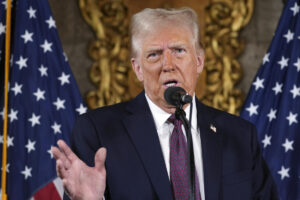The Trump Effect: Navigating Inflationary Challenges and Federal Reserve Policy
As President-elect Donald Trump prepares to take office, the Federal Reserve finds itself in a complicated position regarding its dual mandate: promoting maximum employment while ensuring price stability. Inflation rates have remained a focal point in economic discussions throughout 2024, with concerns mounting about potential challenges to the Fed’s ongoing efforts to maintain inflation near its 2% target.
Inflationary Pressures on the Horizon
Recent minutes from a Federal Reserve policy meeting highlighted increasing worries among Fed officials about upside risks to the inflation outlook. Many members noted, “almost all participants judged that upside risks to the inflation outlook had increased.” This sentiment was influenced by stronger-than-expected inflation reports and anticipated changes in trade and immigration policies under Trump’s administration.
Trump’s proposed agenda, which includes significant tariff impositions and tax cuts for corporations, is widely regarded as potentially inflationary. Tariffs, in particular, have emerged as a contentious topic. The president-elect contemplates implementing an overarching 10% tariff on all trading partners, alongside a staggering 60% tariff on Chinese imports and 25% tariffs on goods from Mexico and Canada. Such policies add layers of complexity to the Federal Reserve’s strategy for adjusting interest rates.
Updated Fed Projections and Economic Forecasts
The Federal Reserve’s latest Summary of Economic Projections (SEP) indicates a revised outlook for inflation, anticipating core inflation rates to rise to 2.5% in 2025—a notable increase from earlier predictions of 2.2%—before settling back to 2.2% in 2026 and 2% in 2027. The implications are clear: the path towards achieving stable prices could face unexpected hurdles as the economy reacts to the anticipated policy changes.
Deutsche Bank chief economist Matthew Luzzetti has underscored that while he expects tariffs to rise by 20% cumulatively on China, he does not foresee the sweeping, universal tariffs that Trump has suggested. Nonetheless, he expresses skepticism about any impending interest rate cuts from the Fed, suggesting they are unlikely amid persistent inflation concerns.
Consumer Sentiment and Economic Activity
Interestingly, while tariffs and trade policies are often framed as primary contributors to inflation, Fed governor Michelle Bowman pointed towards another significant factor: consumer sentiment. She articulated the possibility of a surge in economic activity due to pent-up demand following the election. If consumers and businesses ramp up spending in response to Trump’s pro-business policies, it could generate a ripple effect—leading to higher inflation as "animal spirits" stimulate economic growth.
In essence, renewed consumer confidence could translate into increased investments and spending, fueling a robust business environment. This notion aligns with sentiments shared by equity strategist David Kostin at Goldman Sachs, who noted that investor optimism about accelerated business activity could sustain the ongoing bull market.
Looking Ahead: Uncertainties and Opportunities
As we step into 2025, the outlook remains mixed. Although optimism seems to pervade market sentiments, resulting in expectations for fewer interest rate cuts, it has also created a volatile environment for stock performance. Ultimately, investors and economic analysts ponder whether the recent enthusiasm surrounding Trump’s policies and the resulting economic shifts are justified.
At Extreme Investor Network, we prioritize empowering our readers with insights that matter. For those navigating the complexities of today’s financial landscape, understanding the interplay of government policy, inflation, and market dynamics is essential. Stay tuned as we continue to track the evolving economic landscape and provide the analyses you need for strategic investment decisions.

